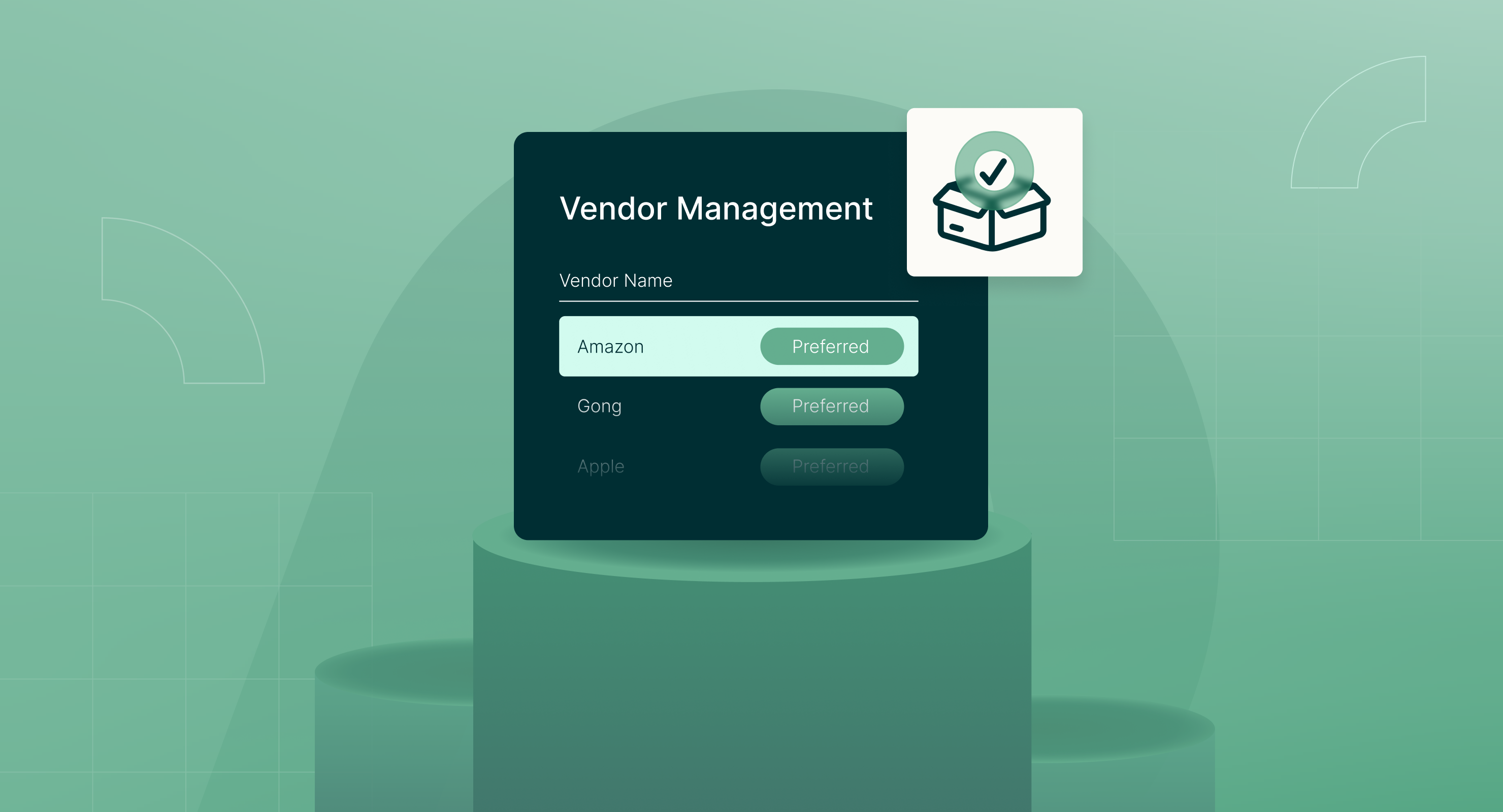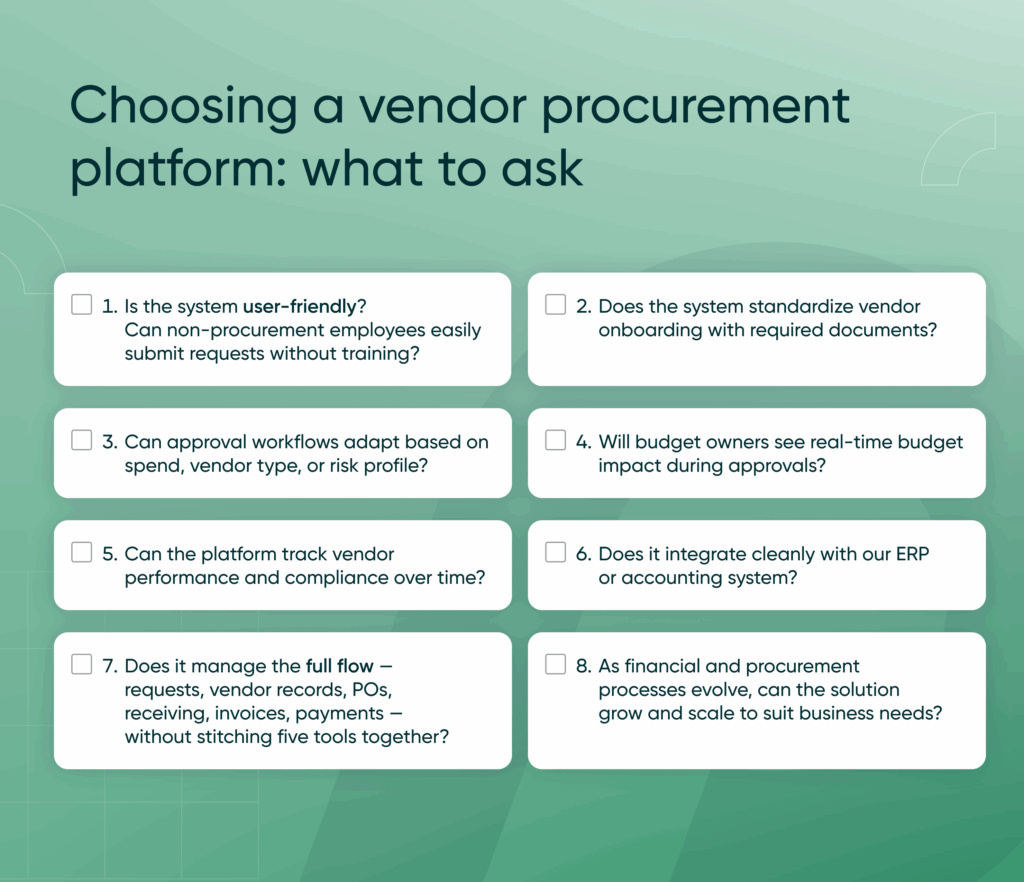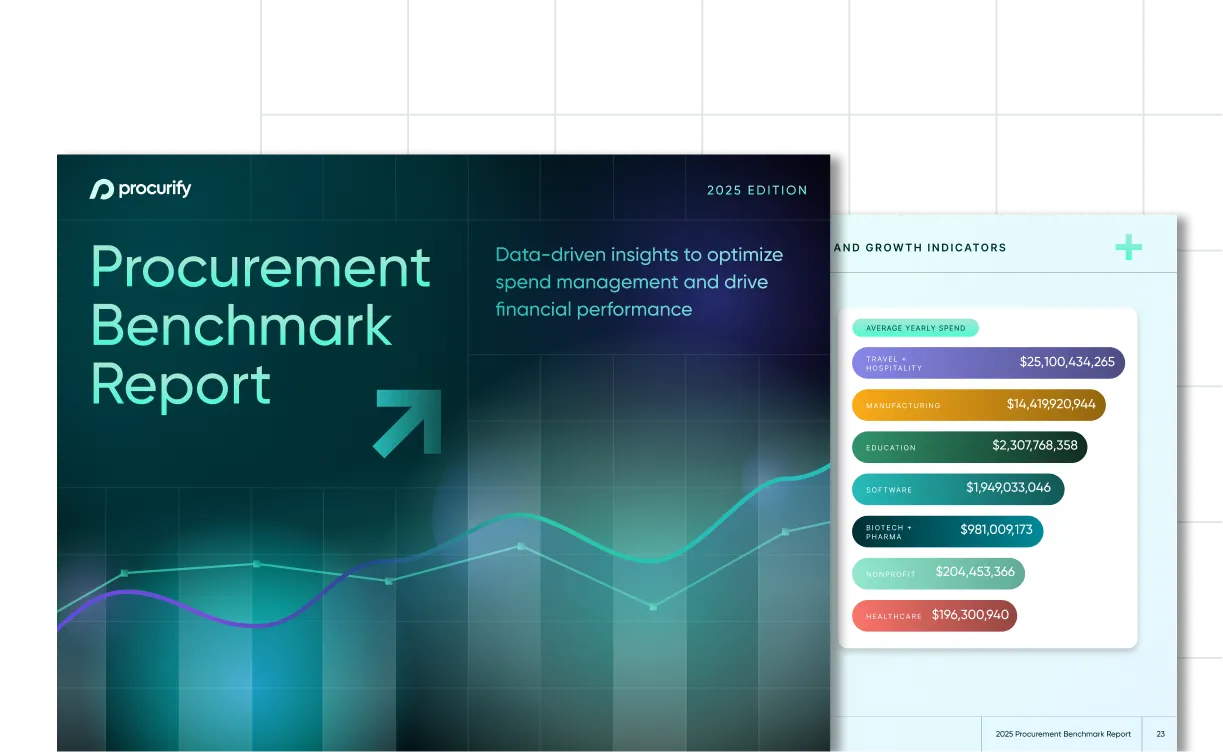
How Mid-Market Companies Win at Vendor Procurement
Vendor procurement might not feel like your organization’s biggest problem, but it’s probably costing your team more time and money than you realize
What works when a company is small — emails, spreadsheets, Slack chats, and even quick texts starts to fall apart as the business grows. It’s not intentional; it’s just the reality when systems don’t keep up with growth.
Winning at vendor management doesn’t have to be complicated, but it does mean building workflows that move fast, control spend, and give teams the visibility they need to act without slowing them down.
More and more mid-sized companies are solving these challenges by rethinking how purchasing, approvals, and vendor management work together. This article breaks down the steps to create a smoother, more transparent process that actually works as your business grows.
Why vendor procurement stalls
Procurement often takes a backseat to sales, product, and hiring as companies grow. But even as teams focus elsewhere, spending continues, and cracks start to appear.
Most problems start at intake, purchase requests happen without clear specs, vendor vetting, or budget codes. Approvals happen informally, based on “who’s around” rather than a structured process. By the time finance tries to close the books, matching POs, receipts, and invoices turns into detective work.
Siloed procurement and finance systems only make things harder. Without a connected workflow and visibility, teams waste hours chasing paperwork and missing information. These aren’t just operational headaches. Over time, disorganized procurement processes erode financial discipline, damage vendor relationships, and weaken a company’s ability to scale effectively.
What modern vendor procurement management can do
Fixing procurement isn’t just about compliance—it’s about unlocking operational speed. Imagine cutting reconciliation time from 30–40 hours a month down to three. A modern procurement workflow makes that possible.
When teams submit purchase requests, everything is captured upfront—vendor info, business justification, budget codes, and delivery timelines are entered in one go. Approvals flow automatically to the right people, triggered by real rules like amount, department, or vendor risk. This means managers and finance gain real-time visibility into the financial impact before hitting approve.
Vendor onboarding becomes structured and consistent. Contracts, W-9s, insurance certificates, and compliance documents are captured and stored from day one. Communication histories stay centralized. And vendor performance — from late shipments to service issues — becomes part of the system, not something people remember (or forget).
Once a request is approved, the rest happens fast. Purchase orders are generated automatically. Receipts match to POs and invoices without manual tracking. Bills flow straight into systems like QuickBooks Online, Sage Intacct, or NetSuite with no rework, no backtracking.
The result? Fewer surprises, cleaner audit trails, and stronger vendor relationships. Finance teams can be proactive instead of reactive. And everyone spends less time chasing approvals and more time moving the business forward.
Streamlining Procurement with Punchout Catalogs
One of the biggest roadblocks for growing companies is keeping employees inside the procurement process. Even with approvals and purchase orders in place, it’s easy for teams to go around the system when ordering feels faster directly through a vendor’s website. Punchout catalogs bridge that gap.
With punchout integration, your procurement platform connects directly to vendor sites. Employees shop as they normally would, but their selections flow back into the system as purchase requests. Pricing, product details, and availability are pulled in real time, eliminating the errors and delays that come with outdated spreadsheets or manual entry.
This capability offers unique advantages for mid-market organizations:
- End-user adoption: Employees get the consumer-like shopping experience they want, without losing process control.
- Contract compliance: Purchases automatically tie back to preferred vendors and negotiated terms.
- Data accuracy: Catalog updates are instant, so teams aren’t relying on old SKUs or price sheets.
- Scalable control: Every purchase still routes through approvals, budgets, and POs before it becomes spend.
Punchout catalogs deliver both convenience and compliance — a rare combination that helps mid-sized companies scale procurement without frustrating end users.
Questions to ask when choosing a vendor procurement platform
Selecting the right system isn’t just about features — it’s about making sure the platform fits your workflows, scales with your growth, and delivers visibility where it matters. Use this checklist to guide your evaluation.

The checklist defines what to look for; now let’s explore how AI and automation bring those capabilities to life in a modern procurement workflow.
Procurement software powered by AI and automation
No matter where you stand, AI and automation are quietly transforming how mid-market organizations manage spend. Not by replacing people, but by helping them work faster, smarter, and with more clarity. Intelligent procurement software plays a critical role in surfacing insights, flagging issues early, and streamlining the entire procure-to-pay process.
Instead of sifting through spreadsheets or chasing down data, teams can now visualize spend across departments, locations, and vendors in a unified view. Intuitive dashboards and spend analysis tools replace static reports, allowing for quick drill-downs into specific trends, whether it’s a spike in purchasing activity or a shift in accounts payable patterns.
AP automation has reduced the time and friction involved in invoice processing. Instead of it taking hours to match POs to bills or manually keying in invoice data, it can be done in minutes through optical character recognition (OCR) and automated three-way matching. This ensures any errors are caught instantly.
AI also makes it easier to get answers, not just data. With the rise of conversational analytics, users can tailor questions to receive visualized responses, allowing them to analyze spend with greater speed and agility than ever before.
The result is a shift from reactive firefighting to proactive decision-making. With better visibility, faster processes, and smarter spend insights, procurement and finance teams are better equipped to stay ahead of spend, protect budgets, and scale operations without scaling complexity.
How this mid-market company modernized vendor management
A mid-sized manufacturing organization with decentralized purchasing faced a familiar challenge: project managers making purchases ad hoc, approvals scattered across inboxes, and finance left to reconcile incomplete or delayed paperwork.
After implementing structured procurement workflows, they centralized intake using guided forms tied to project budgets. Approvals were automatically routed based on spend thresholds and project codes. Purchase orders and invoices synced into QuickBooks Online, helping to reduce manual reconciliation and bring more control to the month-end process.
The results were clear. Procurement cycles became faster and more predictable. Approvals were no longer a black box. Finance gained better visibility into committed spend, enabling leadership to make more informed decisions around budgets and project costs.
This wasn’t a complete system overhaul — it was a smarter way to connect the dots. Teams moved faster, controls tightened, and the organization scaled operations with more confidence and less risk.
Vendor procurement as a growth accelerator
Finding a top vendor management solution isn’t just about controlling spend.
It’s about enabling faster decisions, stronger vendor relationships, and tighter financial control without slowing teams down.
In mid-market companies, the ability to move fast and stay accountable separates those that scale from those that stall. Today’s modern procurement systems are built for speed, visibility, and control. It is not just an operational upgrade; it’s infrastructure for growth.
If you’re ready to move faster, a vendor management system is a great place to start.

2025 Procurement Benchmark Report
Powered by $20B+ in proprietary data you won’t find anywhere else.
